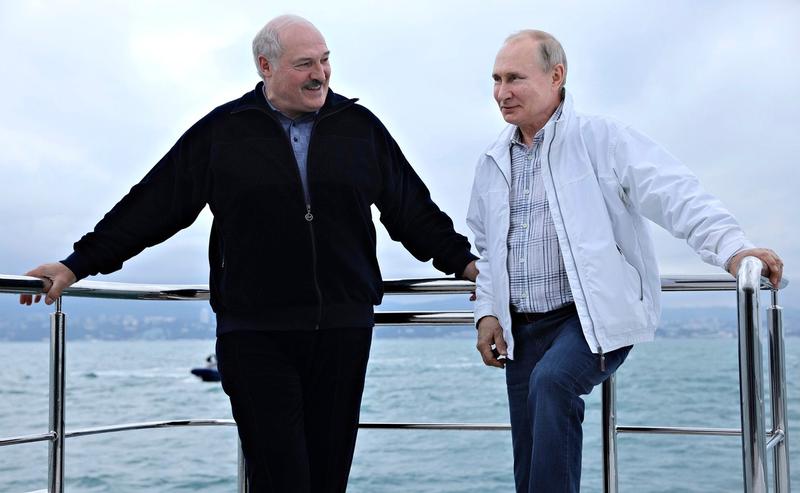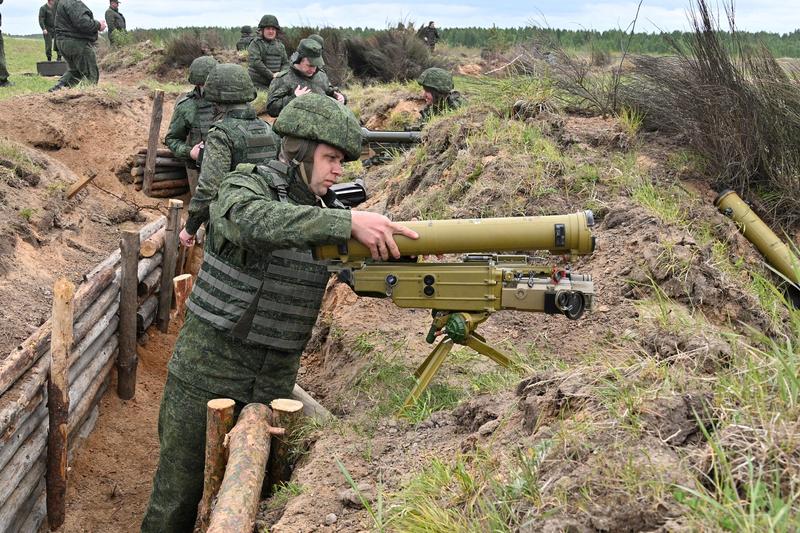
Belarus is clearly a party to the conflict in Ukraine, and Oleksandr Lukashenko is also the Kremlin’s most important ally at this historical stage.
Minsk allowed the Russians to cross its territory and use its bases to enter the northern regions of Ukraine. Moreover, he also offered them military support, from armored vehicles to tanks, writes Inside Over.
But there is one considerable obstacle on the Minsk-Moscow axis: Belarus has not brought its troops into battle. In recent days, there have been signs of increased tension along the border between Ukraine and Belarus, and Lukashenko has sent special forces to the region.
Therefore, sooner or later there will be a direct intervention of Minsk against Kyiv?
- Some reasons would lead to a positive answer: Putin needs troops at a delicate stage of the conflict, and he could invite the troops of his closest ally.
- Others respond negatively: the conflict in Ukraine is not popular among Belarusians, just as Lukashenko himself is not at all popular in public opinion. A combination that could force the Kremlin not to demand such a great sacrifice from its main ally.

Putin and Lukashenko on a walk on a yacht Photo: Government of Russia / Alamy / Profimedia Images
Lukashenko is not happy with the idea of an invasion
At such a stage, one can almost automatically think about Vladimir Putin’s direct request to Lukashenka to send Belarusian soldiers to a military camp. Moscow has serious problems supplying units to the most sensitive fronts, and the Belarusians will be available immediately, partially bridging the numerical gap between Ukrainians and pro-Russians in the regions where the fighting is taking place.
However, this step may create certain risks for President Lukashenko. In reality, war is not very popular in Belarus. It is unpopular even in Russia itself, so much so that Putin “limited himself” to partial, not general, mobilization.
But if the leader in the Kremlin can count on a broad consensus in the country, the same cannot be said about his Belarusian colleague and ally. Lukashenko survived the wave of protests after the 2020 presidential election only thanks to Moscow’s help.
Accusations of fraud, a wave of demonstrations and arrests made it clear how the power of the current strongman in Minsk is not so strong.
Part of the population still supports Lukashenka, especially in the deep Belarusian province, but another part has given up on the incumbent president. Going directly to war against Ukraine would risk upsetting the current fragile balance and destabilizing the situation again. A situation that Lukashenko cannot afford.

Belarus supplies the Russians with weapons. Photo: shot from Twitter
Why not attack Belarus / Weapons and tanks for Russia
The Russian Federation is removing ammunition and other materials from Belarusian military depots, an activity that is incompatible with achieving the conditions for a large-scale Russian or Belarusian ground attack on Ukraine from Belarus, the Institute for the Study of War (ISW) reports in its latest assessment.
The Main Directorate of Military Intelligence of Ukraine (GUR) reported on October 11 that on an unspecified date, an echelon with 492 tons of ammunition from the 43rd missile and ammunition storage arsenal in Gomel (Belarus) arrived at the Kirovska station in Crimea.
GUR reported that Belarusian officials plan to send 13 more echelons with weapons, equipment, ammunition and other military materials from five different Belarusian bases to the Kamenska (Kamensk-Shakhtynskyi) and Marchevo (Taganrog) railway stations in the Rostov region.
Geolocation images showed at least two Belarusian trains carrying Belarusian T-72 tanks and Ural military trucks in Minsk and Tor-M2 anti-aircraft missile systems in Orsha (Vitebsk region) on Tuesday. The movement of Belarusian equipment to Russia shows that Russian and Belarusian forces are probably not creating concentration zones in Belarus.
The movement of equipment and supplies from Belarus to Crimea and Rostov Oblast suggests that Russian forces are less confident about the security of Russian land communications that pass through northern and western Luhansk Oblast, given the ongoing Ukrainian counteroffensive there.
Lukashenko helps Russia train recruits
Tadeusz Gitsan, a Belarusian journalist and researcher at the Center for European Policy Analysis, explains why belligerent statements and statements made recently by Alexander Lukashenko and other Minsk officials are actually aimed at a Western audience.
A researcher from CEPA shows that, judging by the photos that appeared with Russian troops, after September 21, when Vladimir Putin issued a decree on partial mobilization in Russia, newly mobilized, not regular, units of the Russian army arrived in Belarus.
The only real thing we have at the moment is the arrival of Russian Mobiks, the transfer of over 100 tanks and trucks to Russia, and separate “mobilization readiness exercises” in some areas of Belarus, which look just as pathetic as in Russia. Everything else is just hawkish rhetoric. 14/ pic.twitter.com/CvgAXln0Sl
— Tadeusz Giczan (@TadeuszGiczan) October 17, 2022
Gitsan also states that Russian military trains to Belarus do not carry heavy equipment, but only trucks, oil tankers and passenger cars with soldiers.
“The only real thing we have seen so far is the arrival of Russian recruits, the transfer to Russia of more than 100 tanks and trucks, and ‘mobilization exercises’ in some areas of Belarus, which look as miserable as in Russia,” the researcher summarizes.
Therefore, it remains unlikely that Russian and/or Belarusian forces will attack Ukraine from Belarus.
A complex and well-protected border
The border between Ukraine and Belarus is almost completely covered by the Pripyat swamp, one of the largest in Europe, and that several sections of roads that the Russians attacked in February have been turned by the Ukrainians into a veritable “Maghino Line” on their side of the border, with minefields, deep defenses , blown bridges, etc.
“They were attacked by a group [militar] A Belarusian-Russian point of contact in its current state would be suicidal, likely leading to Lukashenka’s political suicide. Therefore, no, there will be no attack from Belarus, at least not yet,” says Tadeusz Gitsan.

The Belarusian army will carry out military executions near the border with Poland Photo: Viktor Tolochko / Sputnik / Profimedia Images
What will the Kremlin decide?
However, the Belarusian president has little room for maneuver. If Putin asked him to sacrifice the deployment of troops on the ground, he could not refuse. Minsk hasn’t deployed troops yet, probably because the Kremlin doesn’t want it either. That is, everything depends on what will be decided in Moscow now.
For now, joint patrolling along the Ukrainian borders may be enough. With this step, Kyiv is actually obliged to maintain important forces in the north of the country at the expense of the fronts in the east and south.
Sources: Inside Over, Institute for the Study of War (ISW), HotNews.ro.
Source: Hot News RO
Robert is an experienced journalist who has been covering the automobile industry for over a decade. He has a deep understanding of the latest technologies and trends in the industry and is known for his thorough and in-depth reporting.